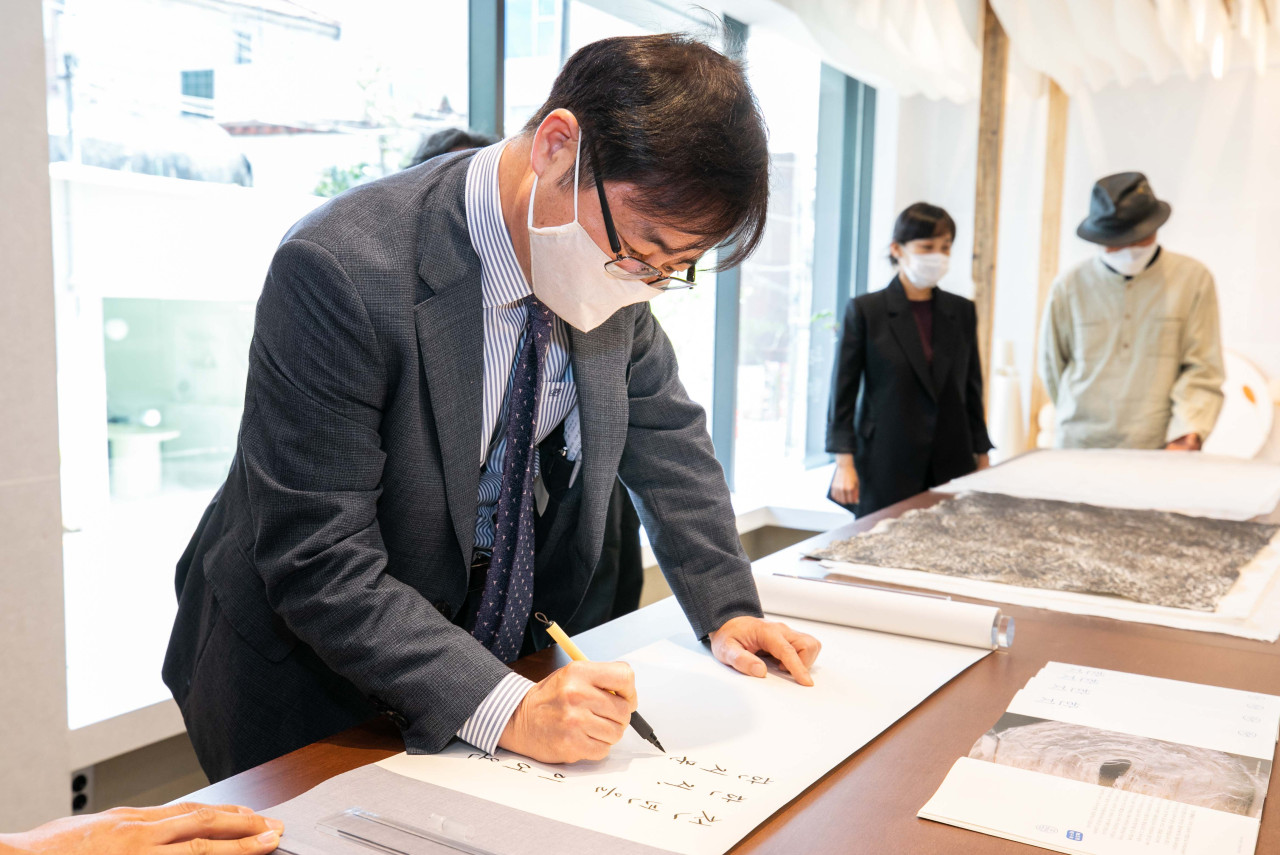Hanji Culture and Industry Center opens to boost Korean traditional paper industry
By Song Seung-hyunPublished : May 24, 2020 - 14:34

The Korea Craft and Design Foundation, a public organization affiliated with the Korean Ministry of Sports, Culture and Tourism, on Wednesday opened the “Hanji Culture and Industry Center” to promote Korean traditional paper hanji.
“Hanji has a long history. However, it has not been promoted properly. Through the establishment of this center, we hope to work on promoting hanji not only in Korea but also in the global market,” Vice Culture Minister Oh Young-woo said at an event marking the opening of the HCIC in Seoul.
Made with the inner bark of mulberry trees in a labor intensive process, hanji has a 1,000-year history in Korea. During the Joseon period, hanji made in Joseon was considered to be of the highest quality and were exported to China where it was highly prized.

“We will form a network to boost the local hanji market and find potential demands,” President of Korea Craft and Design Foundation Kim Tae-hoon added.
From the entrance, the new center was filled with the unique scent of hanji samples. A big wooden table at the center of the first floor displays more than 400 different types of hanji samples which are classified according to usage, production region and types.
On one side of the room, handicrafts made with the Korean traditional paper are on exhibition.
A total of 19 different regional workshops that make hanji took part in creating the space. According to the center, only around 20 workshops exist in Korea.
On the first basement floor, there’s a space for diverse forums, workshops and seminars about the traditional papers. The place is open to both the general public and professionals. More details about the programs held in the center will be provided through the center’s website www.hanji1000.kr.
On Wednesday, some of the hanji makers from different regions gathered in the center and discussed the future of their craft.
During the discussion, Kim Chun-ho, a CEO of Mungyeong Traditional Hanji in Mungyeong, North Gyeongsang Province, pointed out the lack of a driving force for promoting hanji. He said former Korean Culture Minister Yoo Jin-ryong attempted to use the traditional paper for government-issued certificates and guestbooks.
However, the plan came to naught as the Park Geun-hye administration came to an abrupt end with Park’s impeachment. “Not much has been done since,” Kim added.
Oh expressed regret that the hanji industry had not been taken care of.

“From this year, we will work on using hanji for guestbooks in Korean embassies and Korean Culture and Information Service centers overseas,” Oh added.
Some of the hanji makers also noted the importance of increasing the awareness of hanji abroad.
“In the global market, hanji is a latecomer, compared with other Asian papers from Japan and East Asian countries,” CEO of Fides International Kim Bo-kyung said. “So we can claim that hanji is great and has high quality but this may not appeal effectively to global customers.”
She added that this is why a more detailed global promotion strategy based on the usage of the paper is essential.
Fides International promotes and exports handmade hanji to the US and European markets.
Many representatives from the industry also pointed out the problem of the aging of the industry.
“There is no one to pass on our work to. During the last 20 years, workshops decreased from more than 100 to around 20,” said Jang Seong-woo, CEO of Jangjibang located in Gapyeong, Gyeonggi Province.
“I expect that within the next 10 years, less than 10 workshops will survive,” he added.
By Song Seung-hyun (ssh@heraldcorp.com)







![[KH Explains] How should Korea adjust its trade defenses against Chinese EVs?](http://res.heraldm.com/phpwas/restmb_idxmake.php?idx=644&simg=/content/image/2024/04/15/20240415050562_0.jpg&u=20240415144419)











